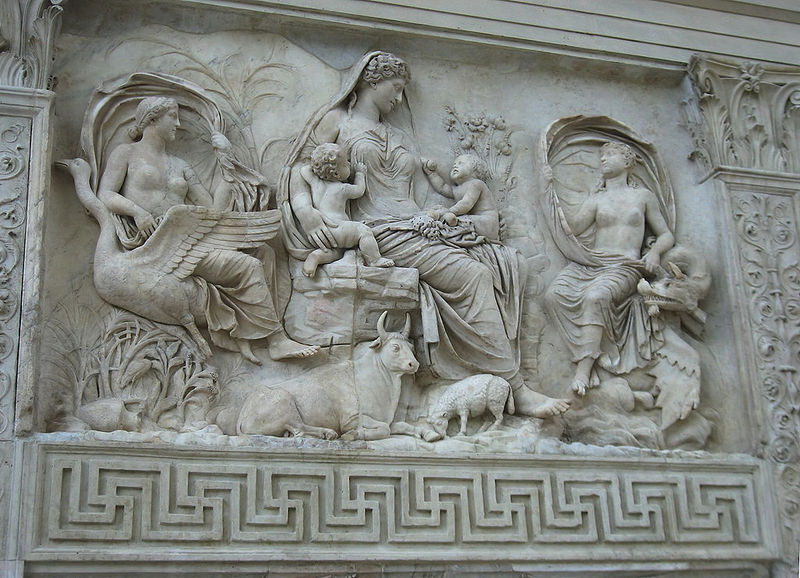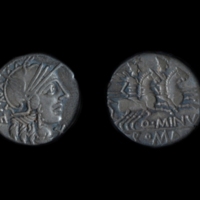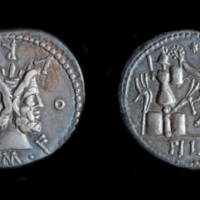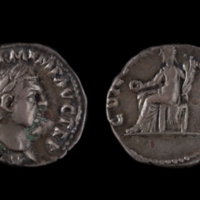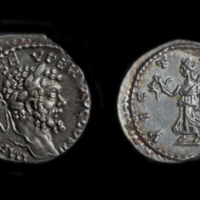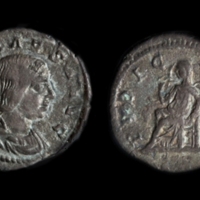Personifications
This image, showing a relief from the Ara Pacis, or Altar of Peace, in Rome, depicts a female figure sitting, holding two babies to her breasts and surrounded by other images of "plenty." There has been much debate over who this figure represents; some saying Tellus, the Roman mother goddess of the earth, but current scholarship favors the identification of Pax, the goddess of peace.
The Hellenistic pantheon has many personifications that represent ideas, emotions or places.
For example, the Tiber River in Rome was personified by the god Tiberinus. He plays an essential role in the mythology of Rome, revealing the twins Romulus and Remus to the she-wolf who raised them and saving them from certain death. He is prominent in Roman art connected to the area.
The most common personification found on our Hallie Ford coins is victory, Victoria in Latin, Nike in Greek. A very common deity during the expansion of the Roman Empire, many emperors used her to commemorate their various military achievements. You can usually spot victory holding a palm or a wreath, ready to crown the victor.
Other personifications featured on the coins found at the Hallie Ford Museum of Art are Concordia (harmony), Pax (peace), Fortuna (fortune), Spes (Hope), and Pietas (piety) to name just a few.
On coins specifically, these deities are often accompanied by their names. Sometimes their identifying features can mix (both Concordia and Pax can be shown with a cornucopia) and coins are sometimes too small to effectively illustrate all their usual attributes. Concordia can generally be identified by her cornucopia, Pax by a cornucopia or olive branch, Fortuna by a rudder or even a blindfold (as fortune is blind), Spes often holds a flower, and Pietas is regularly shown conducting a sacrifice.
References:
Hall, James. 1974. Dictionary of Subjects and Symbols in Art. New York: Harper & Row.
Shapiro, H. A. 1993. Personifications in Greek Art: The Representation of Abstract Concepts, 600-400 B.C. Zürich: Akanthus.
